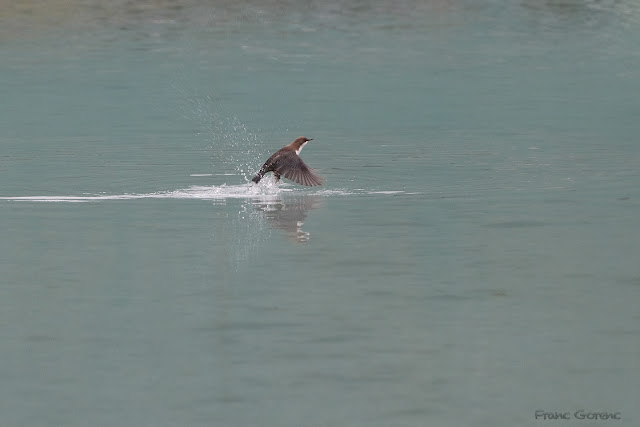On our recent trip to Europe Miriam and I were the only members of our group who had ever seen a dipper and we are fortunate to have seen four of the world's five species.
A discussion about which species is the most attractive is obviously subjective in so many ways, but I think it is safe to say that White-throated Dipper (Cinclus cinclus) would occupy a spot in the top two, the other being the Rufous-throated Dipper (Cinclus schulzi), the rarest of all dippers, with a very limited South American range.
There was ample suitable habitat in the rapidly flowing mountain streams of the Julian Alps and we set out on a quest to find this enigmatic species.
Dippers are totally wedded to water and know no other habitat. Even when they fly it is always low over the surface of the water and never over land.
When they perch on rocks in a stream waiting to enter the water to forage, they bounce up and down as though their legs were little springs (dipping).
They sometimes feed by plunging their head into the rapids searching for typical food such as mayflies and caddis flies and their larvae.
Much of a White-throated Dipper's time is spent foraging, but sometimes it rests between bouts of feeding.
A great deal of feeding is done by swimming down to the bottom of the stream, using powerful wing movements. The bird retains its body heat by enveloping itself in a film of small air bubbles; its feathers are also very robust and highly waterproof. Upon total immersion the dipper's heart rate drops; dipper blood has a high concentration of haemoglobin and hence a greater capacity to store oxygen compared with the blood of terrestrial birds.
Here is a photographic sequence of a bird emerging from a bout of feeding and flying up out of the water.
We had but this one encounter with a dipper, but it was for an extended period of time, and I can safely say it was one of the significant highlights for every member of our group.
Thanks to Franc Gorenc for his excellent photography.






































































.jpg)
